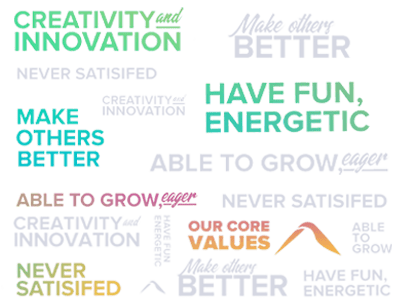Frankly-the term debt collection holds a reputation issue
It is a task that is considered dispassionate, inflexible, and motivated solely by targets rather than human emotions or relationship building. Traditional collection processes often swamped and threatened the borrowers. Automated calls, rigid repayment plans, and reminder communications didn’t take into account the borrowers’ situation. The old model is no longer relevant with the upsurge in customer expectations and economic uncertainty.
The method of personalised collection is inclined towards a contemporary, Customer-focused approach. This new approach considers customers with peculiar situations and not just overdue balances.
The focus of Traditional debt collection was rushing payments. On the contrary, Personalized collections emphasize being considerate of people and circumstances.
The general approach paid no heed to life realities like job loss, bad financial planning or even the increasing cost of living. Changing this approach is also essential now because, as per PewTrusts’artricle, Debt Collection Cases Continued to Dominate Civil Dockets During Pandemic, the percentage of civil lawsuits related to debt has risen to 42%
From Scripts to Strategy: Why Personalization Works
Personalization takes into consideration the narrative behind every overdue account. The personalisation strategies concentrate on working with the customer and not contradicting them.
Let’s comprehend why personalization is more effective:
- Empathetic attitude receives more response than threats
- Engagement is enhanced by offering flexible repayment plans
- Data on people’s behaviour improves manner, timing and touchpoints
According to a report by McKinsey, What is personalization?
- 71% of consumers desire companies to provide personalization.
- 76% of the consumers get frustrated when personalization is overlooked.
Simply put: personalized = productive
How Data Fuels Personalized Collections
It’s important to understand that Personalization doesn’t mean presumption or speculations. It means accuracy that is achieved by leveraging technology, real-time data, and analytics.
According to a Fast Company’s article Oh great, now debt collectors are embracing AI too, 11% of debt collection companies use AI in their tasks
Innovative collection strategies segregate customers by
- Credit patterns
- Payment history
- Communication preferences
- Risk level and probability to repay
- Current life events (e.g., job loss or financial hardship)
Once segregated, organizations can:
- Offer workable and flexible repayment plans that include smaller, recurring payments.
- Selecting the accurate communication channel: Message, email, voice call
- Regulate the tone—some people need a push, others need encouragement
Channel + Timing + Tone = Customer Engagement
Just offering choices doesn’t comprise Personalized collections. Its major components are how, when, and where you offer it.
The application of an omnichannel digital strategy witnesses a 40% increase in payment arrangements, and the cost to collect is cut by 50% through a virtual agent approach
Here’s how leading companies are achieving it correctly:
- Highly- probable contacts prioritize by AI-powered diallers
- Human sounding Conversational messaging
- Not waiting for the accounts to go delinquent and Proactive outreach
Empathy as a Competitive Advantage
Today, successful collections teams function like customer care teams rather than debt collectors. The queries include:
- What is preventing you from making the payment?
- Can we do something to make it easier?
- At this moment, what would be most effective for you?
This method is particularly efficient in sectors like:
- Utilities– where regulatory pressures are mounting
- Credit Unions-where member trust is pivotal
- Telecoms-where churning of customer is costly
Retail finance and BNPL-where customer loyalty is a differentiator strategy for individual debtor profiles.
Real Results from Real-World Examples
Companies adopting personalized collection strategies have testified:
- As per a new study by The Kaplan Group, The AI-Driven Transformation of Global Debt Collection, personalization has led to 25% increase in recovery rate
- Faster repayment cycles
- Enhanced customer satisfaction scores (CSAT)
- Decreased grievances and escalation rates
- Higher retention post-repayment
Sometimes, customers voluntarily recommence payments and return when they feel valued and heard.
The following line of innovative collection approach comprises:
- Self-service repayment platforms with active selections
- AI-powered voice bots that regulate communication tone in real-time
- Predictive analytics for proactive engagement
- Omnichannel strategies that enable customers to pause,.
Final Word: Recover More. Alienate Less.
The aim is to make collections conversational and not confrontational. They don’t always have to be inflexible and rigid; an approachable and responsive method yields more results. And they don’t have to be impersonal to be professional. They should be personalized and humane.
With the rising cost of living and financial uncertainty, help is desirable and not hassles. Companies can recover more if people are placed at the epicentre of collections strategy. This leads to more recovery and the establishment of long-lasting relationships.
Read More – Third-Party ARM Goes Omnichannel: Key Trends Shaping 2025 Collections
Sources:
Omnichannel Marketing Statistics
Engage Better, Collect Smarter: Omnichannel Strategies for Debt Recovery
Omnichannel Collections – Experian
Why Omnichannel Collections Matter: Strategy and Benefits
Does Your Omnichannel Strategy Match What Customers Want? – FICO
Debt Collection Cases Continued to Dominate Civil Dockets During Pandemic – Pew Trusts
What is Personalization – McKinsey
Debt Collectors Embrace AI – Fast Company
How Omnichannel Communications Improve Debt Collection – FICO
The AI-Driven Transformation of Global Debt Collection – Kaplan Collection Agency




